NewVue’s Annual Meeting Focuses on Affordable Housing
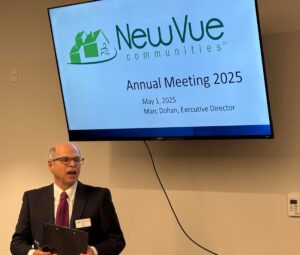
Executive Director Marc Dohan
NewVue Communities held its 2025 Annual Meeting in May focusing on a theme of affordable housing.
Staff, board members, donors, local officials and housing advocates attended the event held at the Carter School Apartments, one of the NewVue’s affordable housing projects in Leominster.
Marc Dohan, Executive Director, provided an overview of the accomplishments of the NewVue team over the past year and talked about the ongoing housing crisis facing the region.
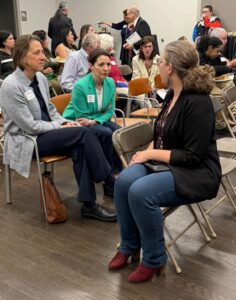
“We really are under siege,” Dohan said.
The gathering featured a presentation by Elise Rapoza, a senior research associate with the MassINC Policy Center, about housing affordability in the 22-community region.
Her report states what many residents in the region have known for years – that housing is unaffordable.
According to Rapoza, more people are moving to the Gateway Cities of Fitchburg and Leominster but there aren’t enough homes to support the new residents. As a result, rents are skyrocketing, and families are struggling to afford the rising costs.
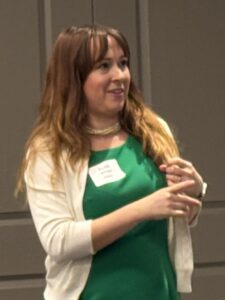
Elise Rapoza, MassInc.
“There is a huge gap between what average people can afford and what people are charging,’’ Rapoza said.
In 2025, asking rents far exceeded rents affordable to the median renter household in the region.
In Massachusetts, affordable housing is generally defined as housing where a household spends no more than 30 percent of its gross income on housing costs. This includes rent, utilities, and in the case of homeowners — mortgage payments, property taxes, and insurance.
In Fitchburg, the median renter can afford to pay about $1,000; in Leominster, it’s about $1,300. Meanwhile the average asking rent in both cities is close to $1,800.
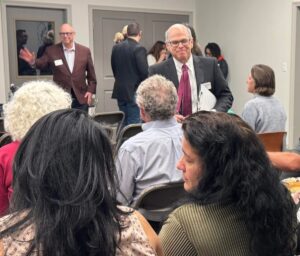
As a result, 48 percent of Fitchburg renters and 49 percent of Leominster renters are burdened by rental costs, Rapoza said, meaning they’re paying more than 30 percent of their income toward housing. And about half of those renters are paying up to 50 percent of their income toward rent.
The high cost comes down to supply and demand, Rapoza said.
“Housing has become scarce wherever you go,’’ she said. “Competition for housing is driving up prices.’’
While the number of households in the region has grown by 10 percent over the past 10 years, the number of housing units has grown by just 5 percent.
Fitchburg’s numbers are even more stark. The number of households grew by 13.1 percent, but housing units grew by just 3.7 percent. Leominster’s households grew by 9.7 percent with a 7 percent growth in housing units.
And of those available units, many aren’t in the supply stream and can’t be occupied due to the condition of the building, for example. In Fitchburg, that represents nearly 6 percent of the housing stock; in Leominster, 4 percent.
With so few units available to meet the demand, prices continue to climb, Rapoza said.
“You want there to be enough vacant units so there is competition,’ she said. “It’s far lower than it should be.’’
The target vacancy rate to ensure competition is 7.4 percent. In Fitchburg, vacancy rates fell below 5 percent in 2022 and dropped precipitously in the suburbs. Overall, there was a shortage of 3,000 units in the region, which will only continue to growth as the population climbs, Rapoza said.
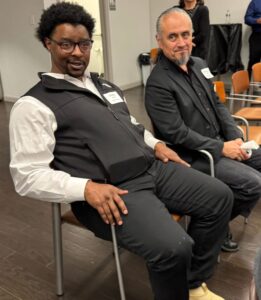
Board member Derek Craig and Director of Community Organizing Francisco Ramos.
Housing production needs to speed up, but creating new housing is expensive, Rapoza said. For example, NewVue’s 68-unit Fitchburg Arts Community is costing about $45 million to develop.
Rapoza said cities and towns can help speed up housing production and preservation through zoning changes and offering financial incentives. While Fitchburg has taken steps in zoning and permitting, Leominster has not, she said.
Among the suburbs, Lunenburg stands out for taking steps to improve conditions for housing production.